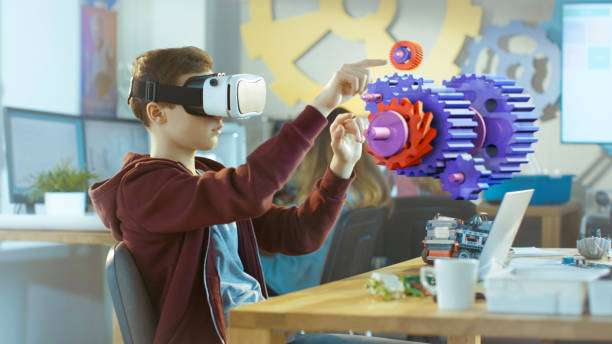Virtual reality is a field in computer technology in which an artificial surrounding is created using a computer-generated simulation. The experience in virtual reality is immersive in that the user believes that the environment is natural. Virtual reality has a great potential in the education field when incorporated into learning, and educationists strive to harness the great potential of such technology. With the help of written papers, you can learn more ways that virtual reality can be used in various fields and education is not an exception. Here are some of the ways that virtual reality can be used to promote effectiveness in learning.

1. Bringing destinations to the classroom
Virtual reality is capable of bringing a far-end destination into the four walls of a classroom. A learning field trip can disrupt a student’s learning rhythm; however, a virtual field trip can effectively meet the objectives of the actual field trip. Regular field trips can get excessive and significantly affect learning patterns and demand an extra budget. With virtual reality, travel expenses are eliminated, and the learning experience can be enhanced as much as physical learning.
2. Making use of the 3D models
Using virtual reality makes it possible to play actual textual content in 3D in video or audio. Such an approach to learning makes studying memorable and promotes ease of understanding. Picture memory and a few notes on the magnetic whiteboards plus notebooks go a long way to build attentiveness.
3. Incorporating fun and mysteries
The current model of learning can be tedious. The current generation is exposed to virtual reality technology that may make the experience boring after a short while. However, virtual reality is fun when incorporating virtual reality tools with mysteries such as Fisher man’s tale during free lessons. Using puzzle games and other activities will help keep it interesting.
4. Striking a balance between the current learning model and virtual reality
Even with the adoption of virtual reality, it is crucial to retain a balance by ensuring you also have lessons where students use their textbooks and notebook to learn by reading and writing.
5. Remote learning and teaching
Virtual reality technology was more helpful with the outbreak of the corona pandemic and enforcement of quarantine and lockdown measures. Learning was made possible using virtual reality by bridging a gap and making it possible for teachers and students to meet in a virtual space. Students can share presentations, exchange views, hold discussions, and many more. If you have difficulties with it, use the essay writing website for your assistance.
6. Maximizing hands-on learning
A hands-on learning experience provided by virtual learning has an everlasting impact on students. They can learn how and why then if and could aspect of a phenomenon. A virtual reality experience makes a student learn to tackle any situation by offering sensory experiences too.
Conclusion
Virtual reality technology can be costly; however, it comes with advantages that can benefit the educational field. It makes learning more engaging, encourages student participation, and encourages critical thinking and problem-solving. The technologies make it possible for students to identify their hidden potentials and capabilities and master skills that can be useful in the future. With virtual reality, the education field can embrace a remarkable transformation in learning and teaching approaches.





